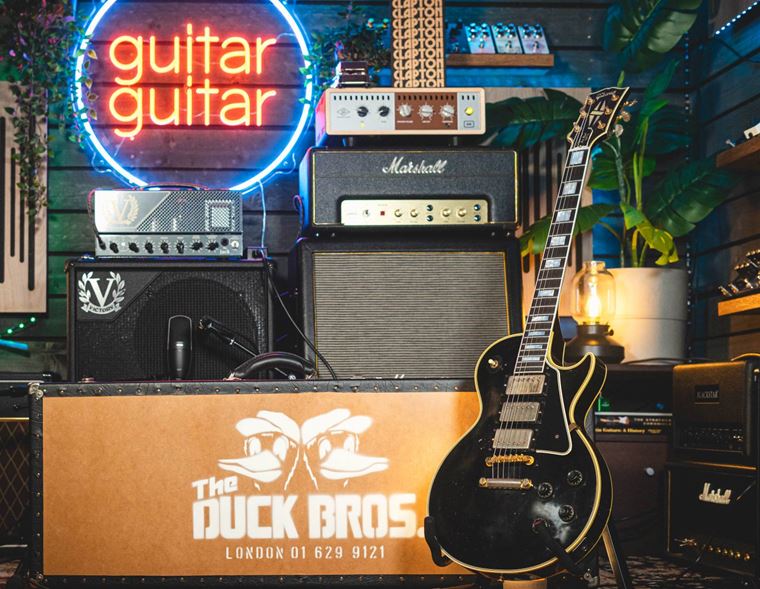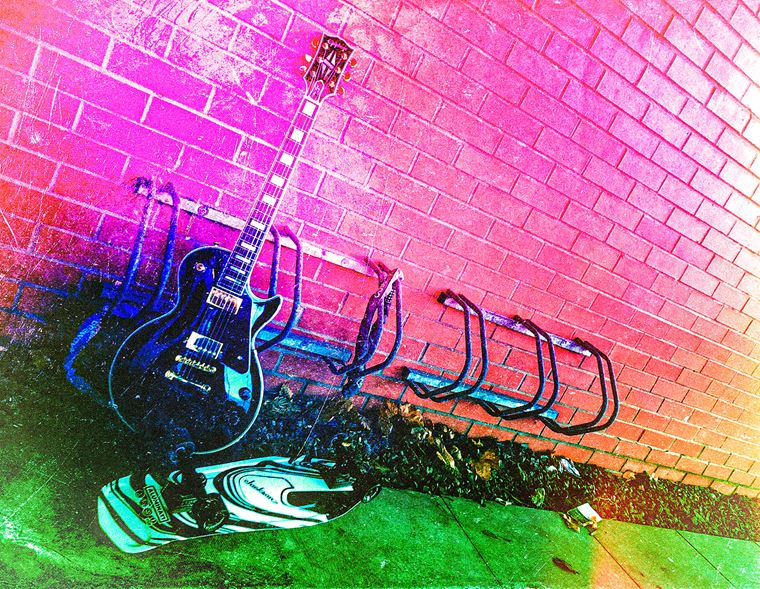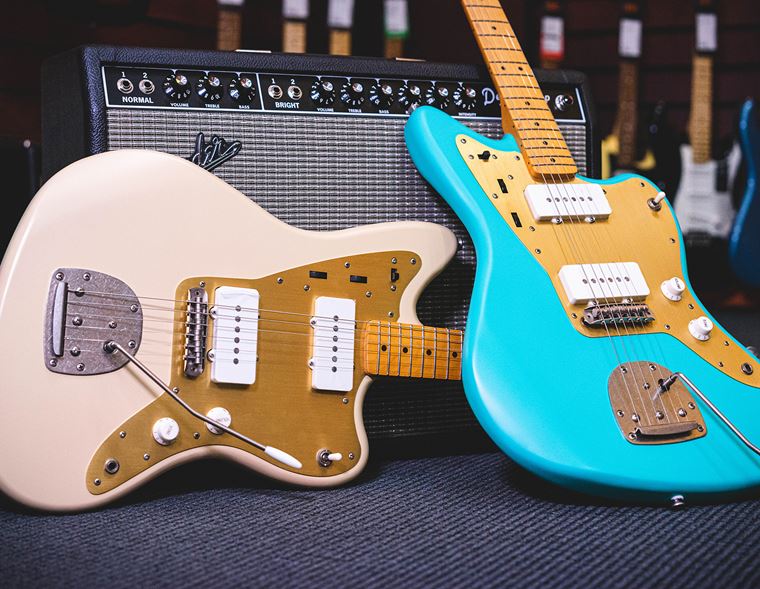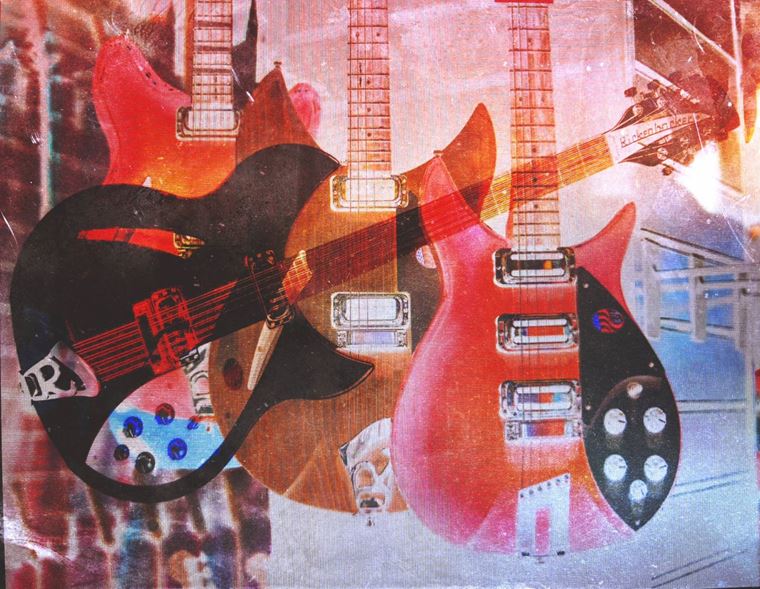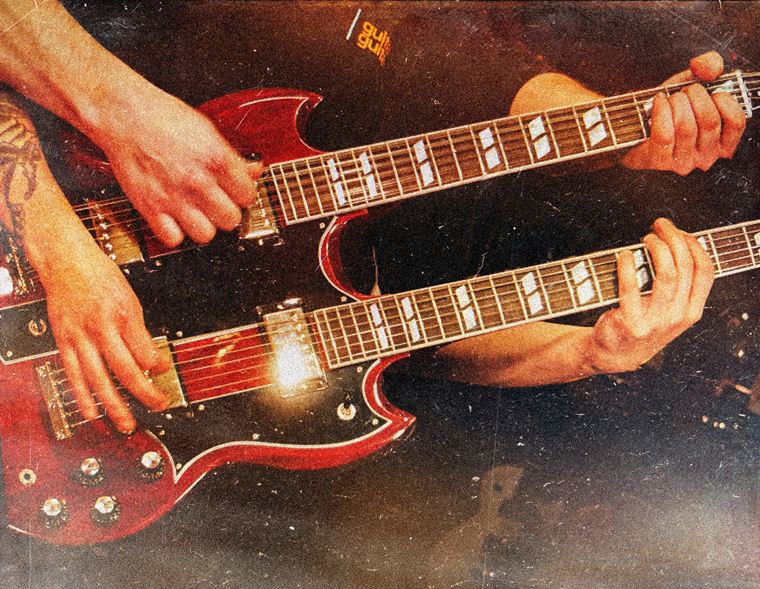What is an Offset Guitar?! Our Expert Guide
Published on 02 September 2021
There’s a lot of talk about offset guitars these days. It’s as if it’s some brand new trend in guitar circles. In reality, offset guitars have been with us for almost as long as the rest, although their cultural cache wasn’t always what it is today.
For example, it used to be that, when somebody said the word ‘Fender’, you immediately thought of Stratocasters and Telecasters. That maybe isn’t the case today... Sure, Strats and Teles are still amongst the most popular guitars in history, but for the last decade or so, Fender’s less ubiquitous designs have become the ones to be seen with. In particular, the Jazzmaster and the Jaguar are fast becoming a more ‘normal’ sight on stages and in music videos that those others. The Mustang, too, is now offered in many more of Fender’s ranges than ever before.
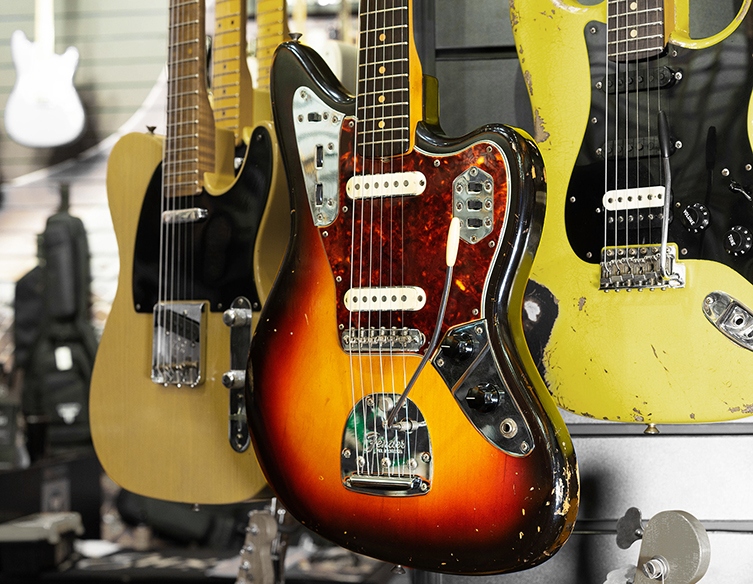
It’s not just Fender, either. Gibson’s famous Firebird is an offset, with an entirely different aesthetic, though it’s fair to say that most other offset electric guitars follow Fender’s lead in terms of design. Most major manufacturers are now offering their own take on the ‘offset’ style, as are a multitude of boutique brands. The contemporary guitar market is fast becoming one of either modern metal machines or retro offsets, with little space in between for much else.
But why? What happened to make the offset style more popular than ever? Is there even an answer? Today, we’ll have a little root around and see what we can dig up. But first, what even is an offset guitar?
Contents
Features of the Fender Jazzmaster
Why Did Offset Guitars Not Catch On?
The Choice of a New Generation
How to Choose an Offset Guitar
What Is An Offset Guitar?
The term ‘offset’ refers to the body shape of the instrument. To be more specific, it seems to refer to the instrument’s ‘waist’, rather than overall outline or indeed the placement of the guitar’s cutaway. This is why Strats and Gibson SGs aren’t considered ‘offset’, even though their cutaways are as non-symmetrical as a Jazzmaster’s. To put it simply, their bodies don’t ‘lean forward’ like bona fide offsets do, if that description makes sense.
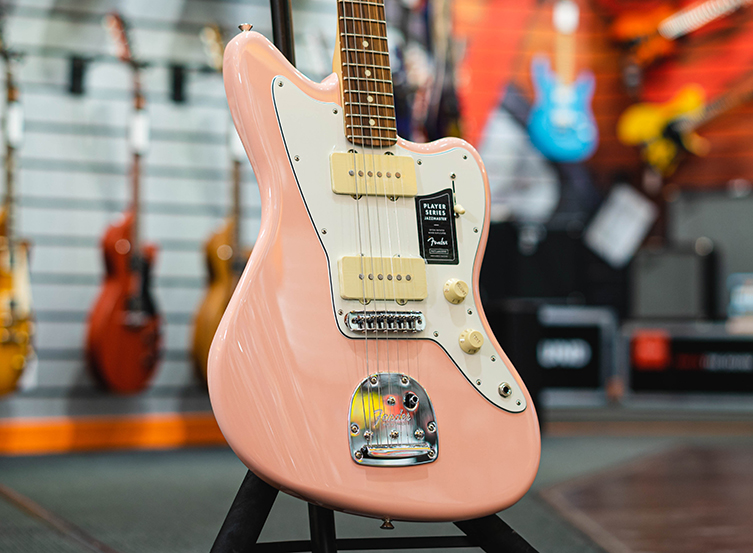
Yes, there needs to be a slightly angular shift in the balance of the body, a slight lengthening, to make the shape qualify as an offset. Some lean more than others, but we’ll get to that...
Fender Offset Guitars
Fender offset guitars are a distinct gang of instruments. They all carry that inherent Fender style and offer varying degrees of the Fender sound, depending on your own interpretation of that term. When the Jazzmaster was released in 1958, it was designed to more or less replace the Stratocaster at the top of the Fender pile. It was flashier, had more controls on it and was markedly more expensive. The name also implied the intent: this was supposed to be for more mature players who wanted to sit and play jazz; indeed, the offset body shape was initially designed in order to make the instrument a better ‘sitting down’ proposition.
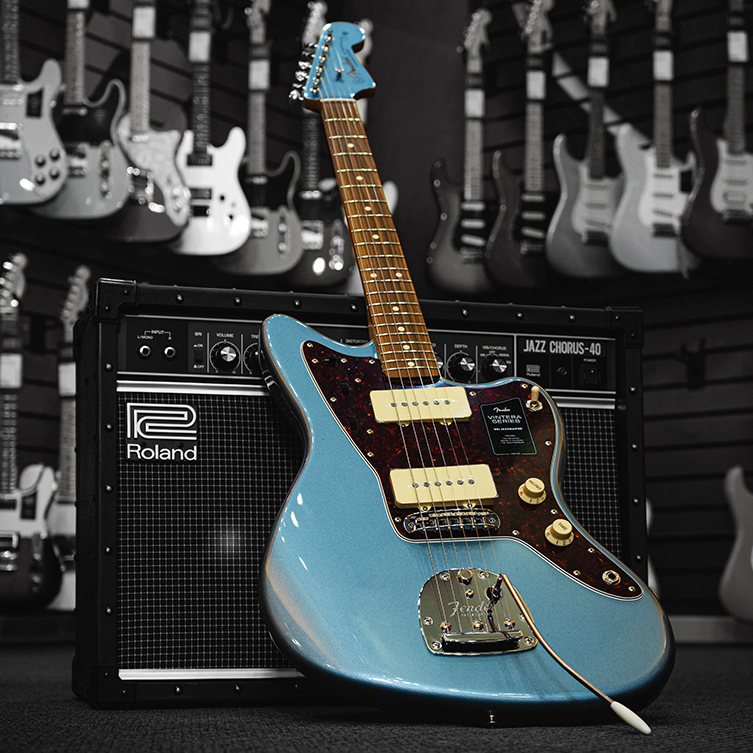
More popular than it’s sibling, the Jaguar (which we’ll look at in a second), the Jazzmaster still never took off the way the Strat or the Tele did. Surf bands like The Ventures got onboard, but most electric guitar fans stuck with the models they knew and the Jazzmaster was eventually sidelined. Like the Jaguar, it made a phoenix-like recovery, but let’s stop for a second and look at the Jazzmaster in more detail. There are some things about it that stuck out at the time, and remain that way today.
Features of the Fender Jazzmaster
As we’ve noted, the offset body design was created to offer the seated guitarist a premium experience. His hands would naturally land in the correct playing positions, and the body shape would fit snugly into the player. This brought its own issues, as we’ll find out.
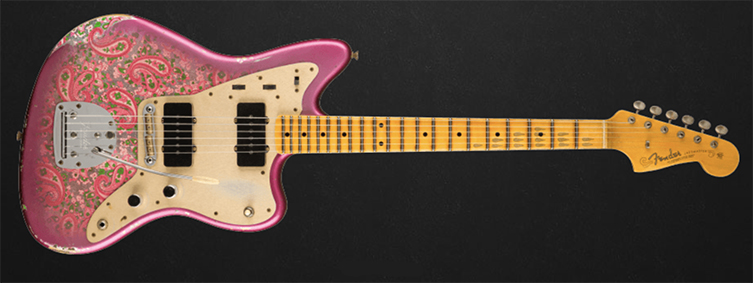
On top of that, Fender brought out some new, larger single coil pickups, in order to a) create a warmer sound and b) attempt to take some of Gibson’s market share. Gibson were the first choice for jazzers back then, due to the warm humbucking sound they achieved, and Fender wanted a slice of that pie. The Jazzmaster’s pickups are fairly unique: they are what they seem: big single coils with longer copper windings bringing a warmer sound. People confuse them with P90s but they are in fact different: they have individual polepiece magnets instead of a bar magnet underneath, like a P90. The sound – recognisably ‘Fender’ but distinctly warmer than, say, a Strat – is one of the key reasons for today’s popularity. You can cover a lot of ground without losing too much of that distinctive twang!

The next big step was a dual circuit design. Instead of the pickups grabbing notes and sending them to the output in one linear circuit, the player could now select between a ‘rhythm’ and a ‘lead’ circuit. More than simply switching pickups, these were entirely different signal paths with different components, and the diversity of tones is clear to hear. Some were (and are) put off by the extra switches, but just as many players welcome the control.
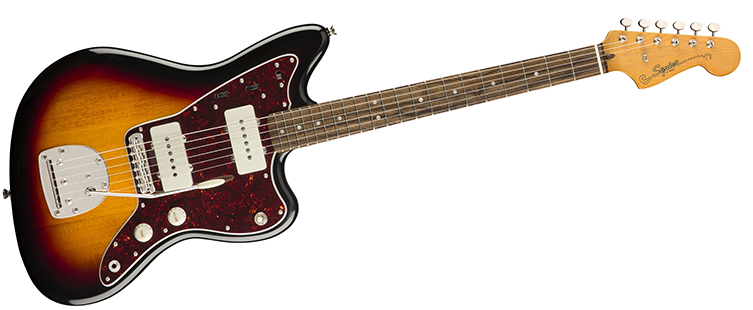
The fourth and, for some, most crucial design element of the Jazzmaster was the bridge and tailpiece. There’s a big ol’ plate of metal back there, with a long, long arm coming from it, and for some players, it’s the best tremolo on the market. For others, it’s a never-ending nightmare of tuning and intonation woes, coupled with a bridge that positively spits out light gauge strings with barely-concealed disdain. 9-gauge strings were not normal issue in the sixties, and so for many, heavier strings work better on these guitars. Whichever side of the bridge you sit on (sorry), there’s no denying that it’s a big part of the Jazzmaster’s identity, not to mention it’s sound. Even the extra length of string between bridge and tailpiece is a feature for some playing techniques. In short, a whole playing style has evolved around the instrument. You can’t get these things playing a Strat, Tele or Les Paul, and so that in itself marks out the Jazzmaster as a favourite for some. There are other reasons too, but we’ll get to them. Time to check out the ‘Jag’.
Fender Jaguar Guitars
The Fender Jaguar debuted 4 years after the Jazzmaster. Adding an even more complex control system under those shiny new metal panels, the Jaguar sought to be the most versatile sounding electric guitar on the market. To be fair, this may well have been the case: in addition to the rhythm and lead circuits of the Jazzmaster, the Jaguar boasted on/off switches for each pickup (which were back to being similar to Stratocaster pickups) as well as a high-pass filter switch affectionately known as the ‘strangle switch’.
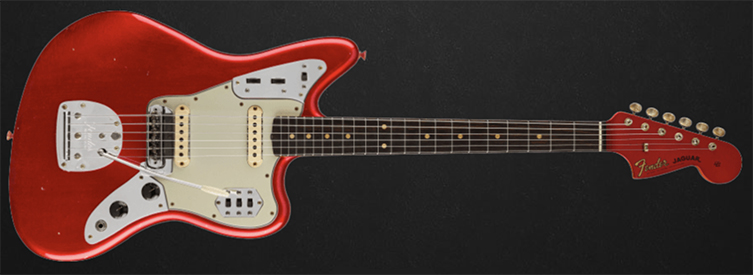
Curiously, the Jaguar also opted for a 24” scale length, making the guitar feel significantly different to other Fenders. Why? Who’s to say, but one of the more believable reasons put forward is that, whilst the Jazzmaster felt great when sitting down to play, it suffered somewhat when on a strap: the distance for the player between hands and controls felt ‘off’ due to the shape and size of the guitar. The Jaguar, with a shorter neck and slightly different body (look closely and you’ll see it), was presumably a response to this, moving everything ‘to the right’ in terms of where a player’s hands would naturally fall.
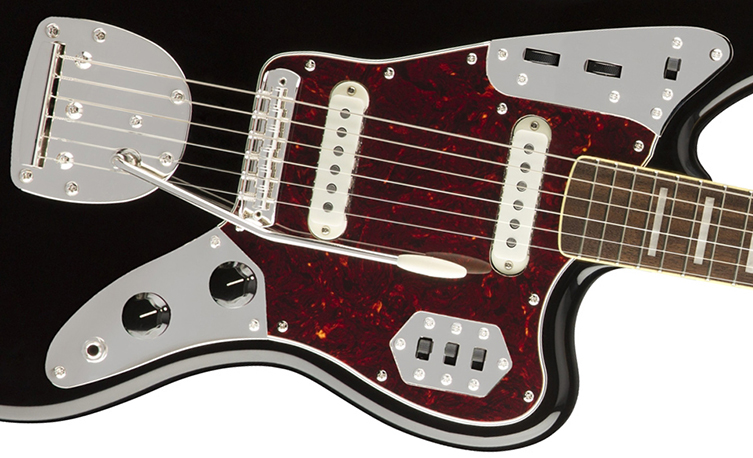
It couldn’t have had anything to do with competing with Gibson’s routinely shorter 24.75” scale length. Definitely not...
Anyway, it’s fair to say that, first time out, the great guitar buying public were not too interested in the Jaguar’s idiosyncratic charms. Debuting in 1962, it lasted until 1975 before the then-CBS-owned Fender company axed the model. It did outlive the Jazzmaster though, which met its first ignominious end in 1968.
Why Did Offset Guitars Not Catch On?
Good question, and we can only speculate. By the late 60s, the British Invasion was in full swing, and guitar heroes like Eric Clapton, Peter Green and so on all played Gibson Les Pauls, which ironically had fallen out of fashion and been discontinued themselves some years prior. Volume, gain and sustain were taking over, and players of many styles wanted to get in on that sound. The newly rediscovered Les Paul was the way to do it. Jazzmasters and Jaguars simply didn’t deliver that kind of sound, and not only that, they were the choice of a previous generation.
They could have been seen as the relics of a previous, cheesy age, when tanned, smiling groups wearing matching suits, haircuts and guitars performed choreographed routines with their Jazzmasters. It was hardly the same as a dark, sweaty Blues club where long haired musicians made exciting new sounds with Les Pauls. In the same way that Grunge blew the water out of the 80s shred scene, so the late 60s did away with the guitar music from before.
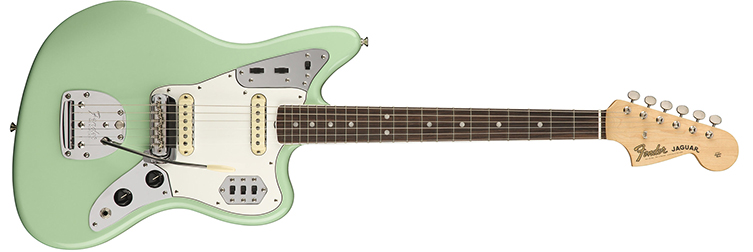
Ironically, it was a ‘grunge’ mentality (we’re pushing our timeline somewhat to fit the comparison) that signalled a return of Fender offsets, but wait! We have more to look at!
Fender’s Other Offset Guitars
The Jazzmaster and Jaguar may be the two most famous Fender offsets, but equal numbers of enthusiasts love the Mustang and the Duo-Sonic. These ‘student’ models were so-named due to their relatively uncomplicated feature set and shorter scale neck. These decisions kept the price down in order to provide an accessible start for fledgling players. Given that the similarly short-necked Jaguar was Fender’s top-priced electric, they could hardly claim that as a student guitar!
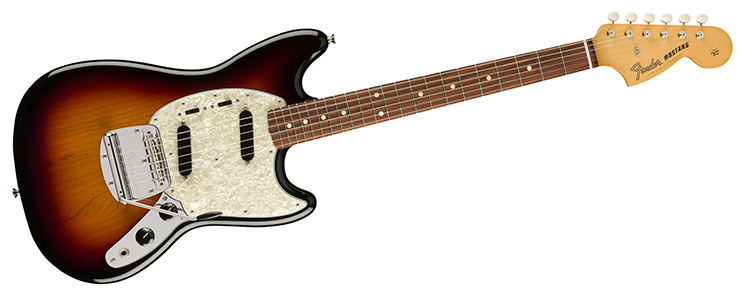
The Duo Sonic, and it’s single pickup sister the Musicmaster, were introduced in 1956 and survived until 1982, when Fender jettisoned them in favour of the Fender Lead models. Their (still) unusual 22.5” scale lengths meant they felt and played radically differently from other electric guitars, and there is a small but passionate fanbase for them to this day.
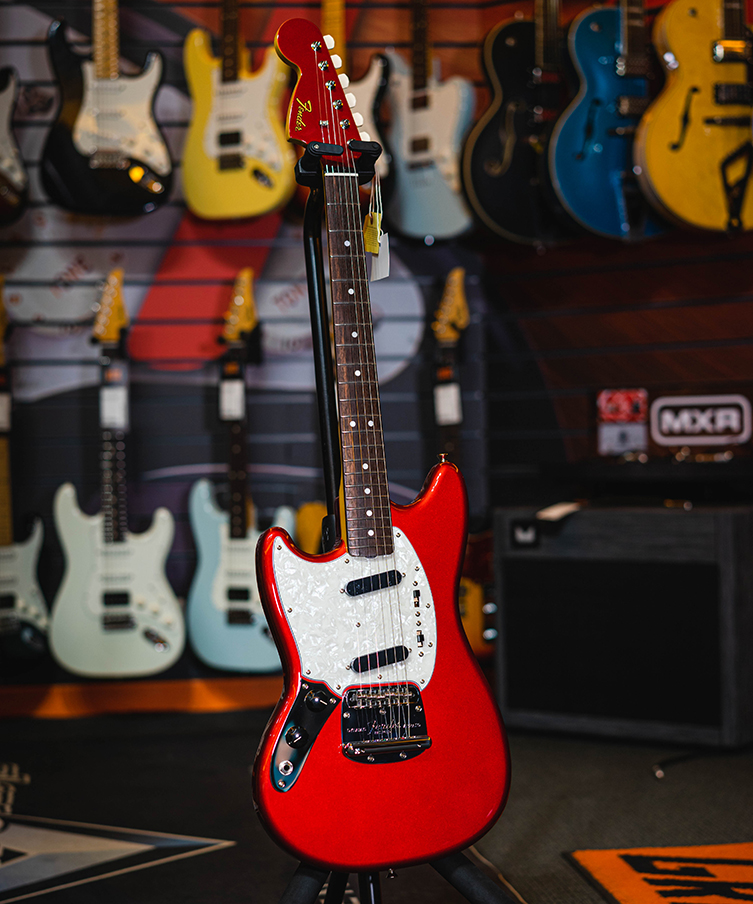
The Mustang, on the other hand, definitely took off. Originally available in two scale lengths – 22.5” and 24” – the larger of the two was significantly more popular. Still small, mind you, and that’s part of the appeal: the 24” scale length is much more forgiving on the fingers and also allows for easier, more accurate string bending. The Mustang featured a rather unique tremolo design, which allowed for some extreme sounds: check out the ‘motorcycle’ noise from Meatloaf’s immortal hit Bat Out of Hell (and read about guitarist/producer Todd Rundgren talking to us about it) for proof that the Mustang is no mere student model!
The Choice of a New Generation
So, the late 60s brought us Jimi Hendrix on his Strat and Eric/Jeff/Paul etc on their Sunburst Les Pauls. Popularity for Fender’s offsets went down to the point where, as we’ve noted, they’d mostly died out by the early 80s. Now, we often think of the 80s as being all about hair metal and shredding (which offsets are entirely inappropriate for, let’s be honest), but that’s only a small part of that decade’s story. Away from the Sunset Strip, bands like Sonic Youth and The Birthday Party were scouring pawn shops for the cheapest electric guitars they could find to modify and tour with. At this point, guitars like Jazzmasters - and particularly the shorter scale Jaguar and Mustang - were available for next to nothing. Nobody wanted to be seen dead with them, everyone had traded them in for a pointy-headstocked shred monster, so these early alternative bands went to offsets by necessity more than anything else. They were cheap, they worked and they had features that helped make unusual noises. Plus, there was some value in taking back something that someone else thought was worthless, and finding some gold there after all.
Of course, that particular counterculture became enormously influential. Offsets became a badge of non-conformity, a statement that not only were you not a shred player, you had zero interest in becoming one! The guitars we choose to play all tell the world something about our personalities, whether we want them to or not. For the early adopters of old offsets, they were a statement of intent.
Kurt Cobain was a huge offset fan too, largely for the same affordability/availability reasons. His championing of Mustangs and other offsets was surely influenced by artists like Sonic Youth, and in turn his using of them opened the floodgates, the effects of which are still being felt today! Grunge is a hard thing to pin down in terms of influential defining ‘images’ (Pearl Jam, Soundgarden, Alice in Chains and Nirvana are all significantly different from each other, sonically, visually and aesthetically) but Cobain is undoubtedly the cultural touchstone of that era.
This began the slow and steady climb of the Fender offsets. Today, they are arguably as popular as the Stratocaster and the Telecaster, particularly in Indie and Alternative scenes. These things always change, but just as hard rockers will always appreciate a Gibson Les Paul, Indie musicians will always gravitate to an offset.
Other Offset Guitars
So, that takes care of the Fender offsets, which are, by and large, the ones most of us associate with the term. But what of the others? Indeed, there are lots of examples from both the past and the present. Here are a few of the ones we know and love.
Gibson Firebird
Whether you think of Johnny Winters or Phil Manzanera, the term we’d associate with the Gibson Firebird is ‘coolness’. Cool people play them and they look awesome. They do not fit in standard gig bags and they can be top-heavy on a strap but none of that matters once you get one in your hands!
Interestingly for such a famous guitar, there are actually two completely different body shapes available for the Firebird, and most players definitely prefer one or the other, rarely both! Known as ‘Reverse’ (this one came out first) and ‘Non-reverse’, both styles feature through neck construction, and often employ mini-humbuckers. Thus, the Firebird has a sound that’s thick and yet very tight, something that lots of Les Paul players overlook when choosing an instrument.
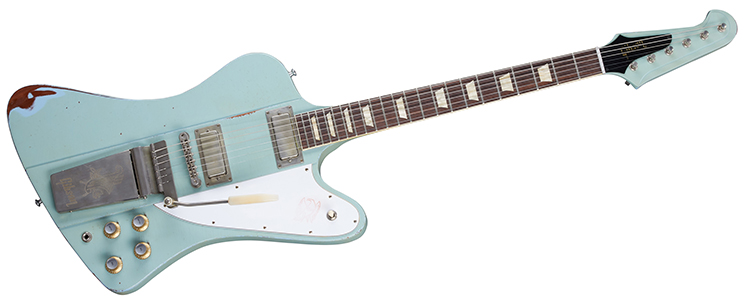
Debuting in 1963 (a few years after the Les Paul had been given its marching orders), it could be said that the Firebird was Gibson’s response to the success of Fender’s solid body guitars. The offset body was definitely an unusual move for them, but then, they’d already made the Flying V and the Explorer, so perhaps they were just feeling really, really bold. Whatever the case, the Firebird has been in constant production since its inception.
Ibanez Iceman
The immediately distinctive Ibanez Iceman came about in 1975, when Ibanez had a reputation for building extremely good quality, extremely affordable guitars that just looked a bit too much like Fenders and Gibsons. Lawsuits happened and Ibanez needed their own original guitar design to compete with the big boys. Thankfully, they came up with a stone cold classic! The Iceman is not quite as readily seen around as other offsets, but it’s a classic through-and-through. Paul Stanley is the obvious Iceman guy, though the KISS frontman claims that his PS guitars are nothing like Iceman models. They are, though. They are exactly the same.

Contemporary Offset Guitars
Today, offsets guitars are in plentiful supply. Custom and boutique builders like Balaguer, Bilt, Fano and many others all make their own versions of the famous offset styles, often with outlandish hardware and finish options. Some are contemporary in design, others look like George Jetson would play one!
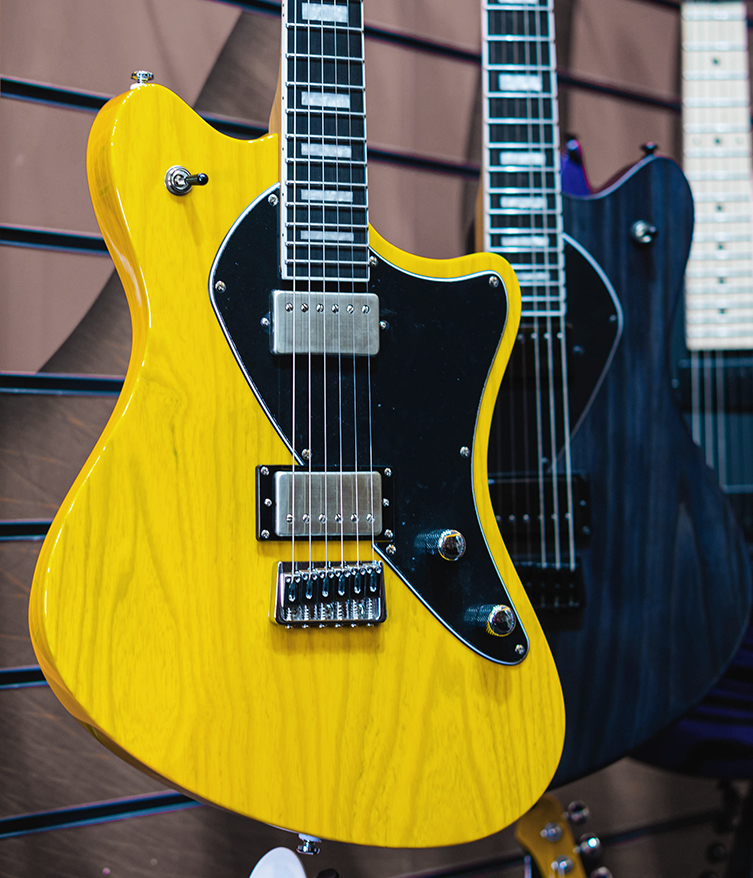
Fender, of course, have massively stepped up their production of offsets to meet demand. Pretty much every price point features an offset of some description, from the bestselling Player Series, to the retro Vintera guitars and through to the American Pro II range and onwards to the Custom Shop. For most, Fender will be the first stop on the road to offset glory, but there are alternatives...
Even major brands like Jackson and EVH – hard rockin’ brands you wouldn’t immediately associate with ‘offset culture’ – make guitars that, at least in silhouette form – adhere to the offset formula. The EVH Wolfgang is undoubtedly an offset, as is the Jackson Dominion and the Rob Caggiano Shadowcaster, though these would perhaps not be the first offsets that spring to mind for moustachioed hipsters!
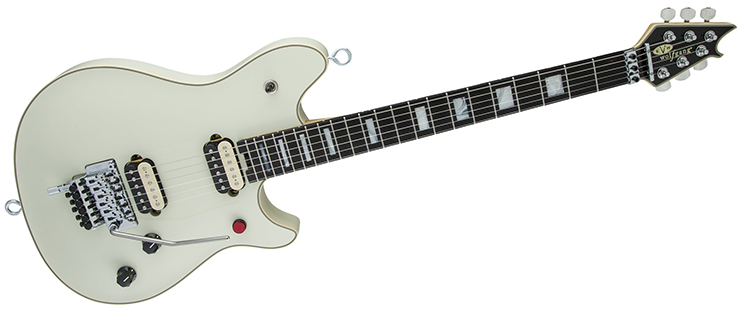
How to Choose an Offset Guitar
There has never been a better time to shop for your own offset guitar. Do you want one that’s vintage-specific? No problem! Fender has your back with American Originals, Vinteras and even Squier Classic Vibe models. Do you need a humbucker? Check out the Player Series or shop off-piste with another brand. Most modern offsets have the benefits of improved bridges (double check though), altered electronics (not everyone wants those dual-circuits!) and a wealth of other options.
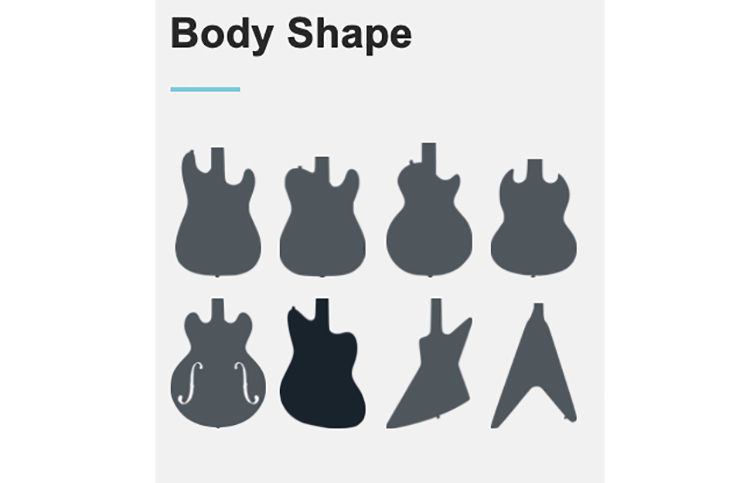
If you are now suitably in the mood to shop for an offset guitar, we can of course help out! The easiest thing today is to stay here on our site, click on the ‘Electric’ tab at the top of our site and then click on the little orange offset shape over by those guitar icons on the left (it’s in between the 335 and the Explorer). That should hopefully bring you all of our offset models, from Squier Mustangs to Custom Shop Jazzmasters, Wolfgangs to Balaguers! (You can also click the big button below!)
You know the history, you know the context, so now it’s up to you: what are you going to play on your offset guitar?



